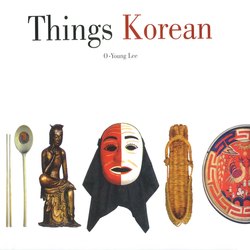Читать книгу Things Korean - O-Young Lee - Страница 19
На сайте Литреса книга снята с продажи.
ОглавлениеLaundry Bat: The Cudgel Tamed
Tadumi
Some use a knife for peeling an apple, and some use it for killing people. The same goes for any other device used by man-its nature depends on the nature of the one using it, and on how he uses it.
Take the strings of the bow and the harp. Both strings are of the same origin, but one is used to pierce the flesh and cause life-giving blood to flow, while the other is used to pierce the air and cause the most beautiful strains of music to flow. So a person's nature can be defined by the instruments he uses, and how he uses them.
They say the cudgel was the first device used by man, and he used it as an extension of his fist. We can see this when we consider those circumstances in which he uses his fist. Not in love. Not when he is resting in the shade, wiping his brow, after plowing a field. In love and in rest the hand is relaxed, open. The clenched fist is used when we want to smash something into pieces, to beat on something, to strike a fellow being. The human arm was the handle of the cudgel, and the fist was the head of this blunt, insensitive object. How this tool was used depended, like every other tool, on the nature and intent of the one wielding it.
The fact that the first device made by man was an extension of his clenched fist, not his open hand, is evidence that inherent in man's devices and his civilization is the inclination towards some quite nasty reflexes, resulting often in violence and war.
But look at what the Korean has done with the cudgel. The Korean changed it into a bat, for both washing and ironing clothes. When the cudgel came to Korea, women took this tool of aggression from the hands of their men. In using it to wash their family's clothes at the washing rock of a fresh spring and, in the women's quarters deep in the night, to smooth and soften the clothes, our women pacified it. This labor of renewal begins and ends with the laundry bat, the tool that started off as a cudgel.
This is why, when we Koreans hear the laundry bat at work, it is not the cudgel's cries of war and distress that we hear. We grew up with the heartwarming, consoling sound of mother or elder sister working in some cozy spot in the night, and the more we hear the quiet, steady drum of her bat, the more we want to hear.
The solid oak bat on that smooth, glimmering washing rock gives off a clear, limpid sound. Together our women, as if they were playing in a percussion ensemble, drum away on the cotton clothes in harmonious rhythm, now and then varying the beat. Back home later, in unity, in counterpoint, they produce artful syncopation as they smooth the wrinkles and soften the texture.
Yes, fire and water will always be opposite extremes, but if you put a full cooking pan between the two you get a wholesome meal; in just the same way, put a piece of cloth between an organic piece of wood and an inorganic rock, and you will get a lustrous sheen. Put a piece of clothing between a laundry bat and a washing rock, and their three distinct natures work themselves together into a melodious tone.
At such a time this bat displays its difference from the cudgel. It is a child of the same wisdom with which the ancients in their day gathered their swords and melted them down into a temple bell, the wisdom with which we will pick up our shell casings and turn them into church and school bells.
